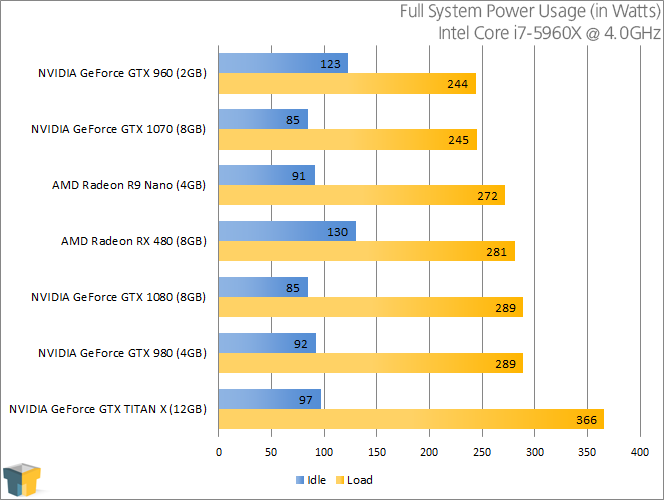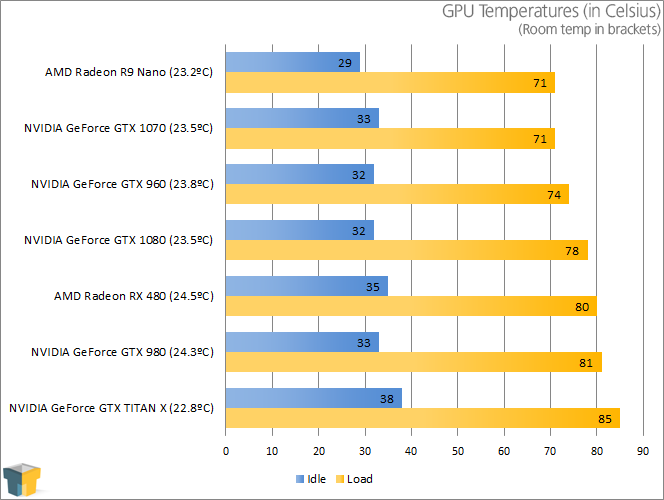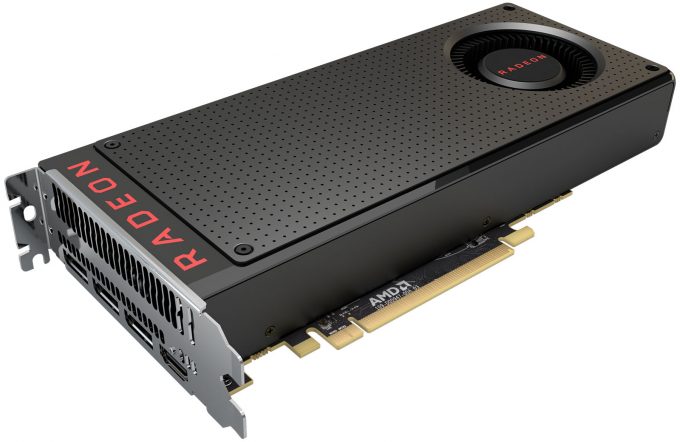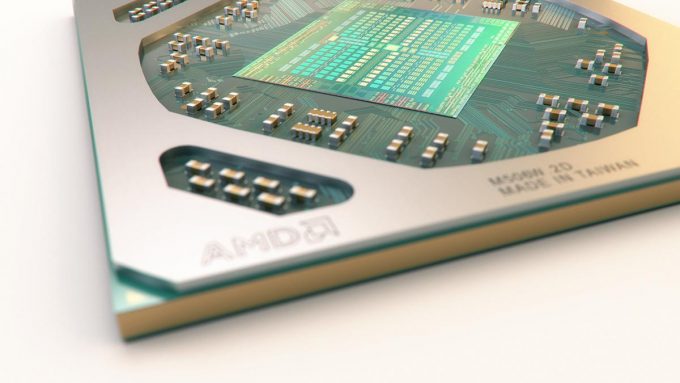- Qualcomm Launches Snapdragon 4 Gen 2 Mobile Platform
- AMD Launches Ryzen PRO 7000 Series Mobile & Desktop Platform
- Intel Launches Sleek Single-Slot Arc Pro A60 Workstation Graphics Card
- NVIDIA Announces Latest Ada Lovelace Additions: GeForce RTX 4060 Ti & RTX 4060
- Maxon Redshift With AMD Radeon GPU Rendering Support Now Available
AMD’s Polaris Has Landed: A Look At The $200 Radeon RX 480

The moment many PC gaming enthusiasts have been waiting for is here: AMD’s first Polaris based GPU has arrived. Much of what makes the Radeon RX 480 an alluring card isn’t a secret, as AMD itself has been talking about it quite extensively, so let’s just get right down to business: what can AMD’s latest $200 Radeon muster?
Page 7 – Power, Temperatures & Final Thoughts
To test graphics cards for both their power consumption and temperature at load, I utilize a couple of different tools. On the hardware side, I rely on a Kill-a-Watt power monitor, which the PC plugs into directly. For software, I use GPU-Z to monitor the core temperature, and 3DMark’s Fire Strike 4K test to push the GPU hard.
To test, the floor area behind the (shut down) PC is tested with a temperature gun, with the average temperature recorded as the room temperature. Once that’s established, the PC is turned on and left to sit idle for ten minutes. It’s at this point when the idle wattage is noted, and 3DMark is run. It’s during the ‘Graphics Test 2’ that the max load wattage is recorded.


On the temperature front, the RX 480 performs quite well. It didn’t break past 80°C, and idled at a resonable enough temperature (I didn’t do proper noise testing, but the card wasn’t loud enough during testing where it stood out).
The power draw did surprise me, though. Despite being a brand-new card, the RX 480 idles at a much higher wattage than most everything else in this particular line-up (perhaps a bug in the early driver?). The exception is with the GTX 960 (which is a factory overclocked model – due to time, I overlooked noting that in the graphs). At full load, the RX 480 hits 281W, which falls just behind the GTX 1080.
July 18 Addendum: As it happens, our power draw results are inaccurate. In between the time I reviewed the GTX 1070 and this RX 480, the test PC decided to begin exercising Windows’ search indexer after every boot, falsely inflating the idle and load wattage. In the past, I made it a habit to disable this service, but with the move to Windows 10, I figured it was unnecessary. Not so. So, please disregard these power results.
Final Thoughts
Does AMD’s Radeon RX 480 live up to its enormous hype? Based on the current landscape: yes, without a doubt. We’re talking about a $200 GPU that can eat 1080p games for breakfast and deliver compelling 1440p experiences. Console what?
There are a couple of things I’m confused by, though. AMD has been pushing the 4GB version of its RX 480 hard since its announcement, yet press were not sampled that version. I’ve heard murmurs that the 4GB version would have slower memory than the 8GB card, but I wasn’t able to get confirmation in time for publishing. I can confidentially say, though, that most people are going to be just fine with 4GB. It’s with high-end settings at 1440p where that will become a problem. If you’re genuinely concerned that 4GB won’t be enough, it might not be, so I’d recommend opting for the 8GB model.
A tl;dr version: 1080p gamers will be fine with 4GB; 1440p gamers should consider 8GB – especially for the sake of future-proofing.
One other thing I can’t wrap my head around is that AMD specs its RX 480 at “up to 5.8 TFLOPs”. NVIDIA’s GeForce GTX 980 is spec’d at 4.6 TFLOPs, and throughout all of our tests, it comfortably led the RX 480. Based on the 5.8 TFLOPs spec, the RX 480 should actually compare best to the 5.6 TFLOPs GTX 980 Ti – but it of course wouldn’t touch it. What it takes to exercise that full 5.8 TFLOPs of performance, I’m not sure. Perhaps with a future driver update, things will improve.
Single-precision performance isn’t everything, though, and in fact, it doesn’t mean much at all where pricing is concerned. Even if the RX 480 couldn’t match a GTX 980, that card cost $500 not too long ago. Meanwhile, this RX 480 keeps close behind it – at 200 freaking dollars (or $240, depending on the version).
At this point, I can’t comment on overclocking, as I didn’t have time to get down and dirty with it. I hope to explore that more soon.
What else can be said? Polaris is here, and it delivers an almost innumerable amount of worthwhile updates. While the move to FinFET is undeniably huge, AMD itself pushed so many innovations and enhancements through with Polaris, that it truly is the biggest, most ambitious GPU launch AMD has had in a while – especially when it delivers a 5 TFLOPs part at such an affordable price point.
The fact that AMD’s product lives up to its hype means one thing: NVIDIA will not be far behind with an answer. That leads me to ask one question: do these companies really need to release so many GPUs during the hottest point of the year? Let’s just say I’ve been really getting value out of my air conditioner this summer – and it’s just begun.
There might be some confusion about AMD’s performance promises, and the fact that it draws more power than we’d expect it to, but both things don’t damper what’s an undeniably impressive part. In a way, it sometimes excites me more to test a card like this one than an expensive, high-end part – a good value proposition is exciting. And with its RX 480, AMD certainly has a great one.

AMD Radeon RX 480
Support our efforts! With ad revenue at an all-time low for written websites, we're relying more than ever on reader support to help us continue putting so much effort into this type of content. You can support us by becoming a Patron, or by using our Amazon shopping affiliate links listed through our articles. Thanks for your support!







